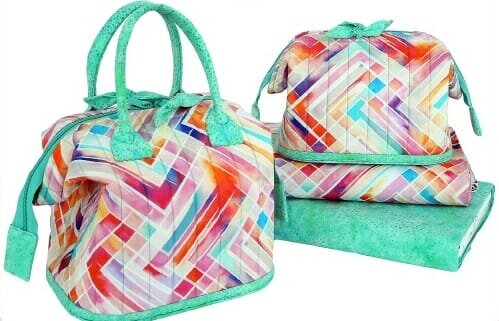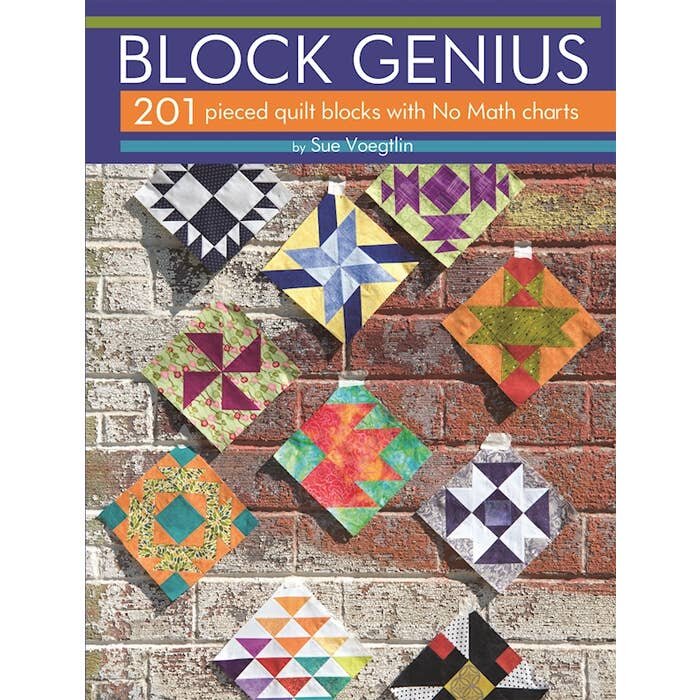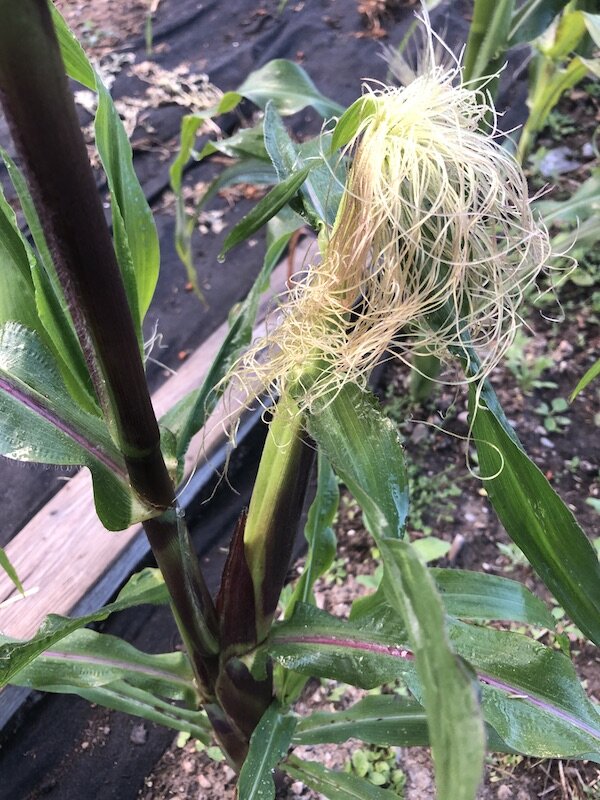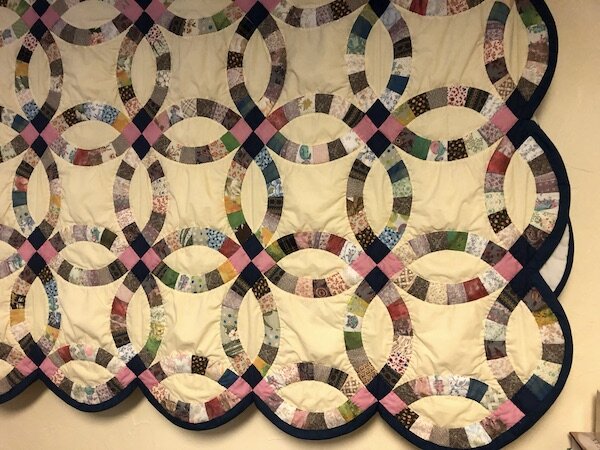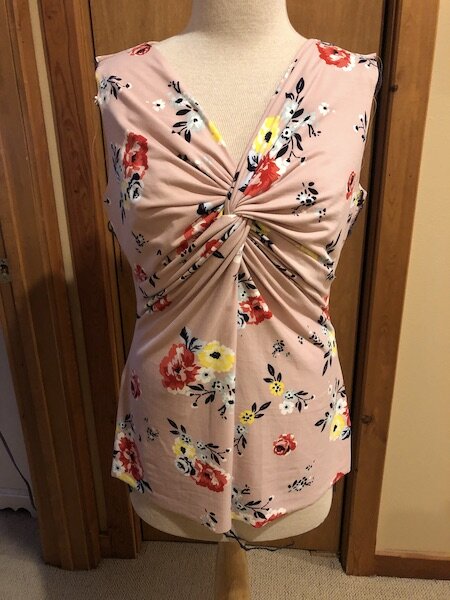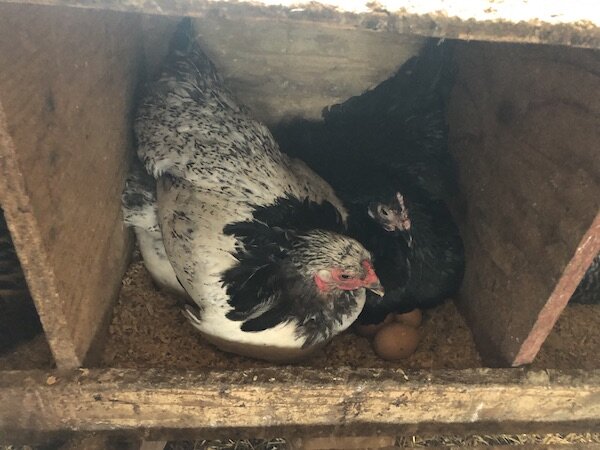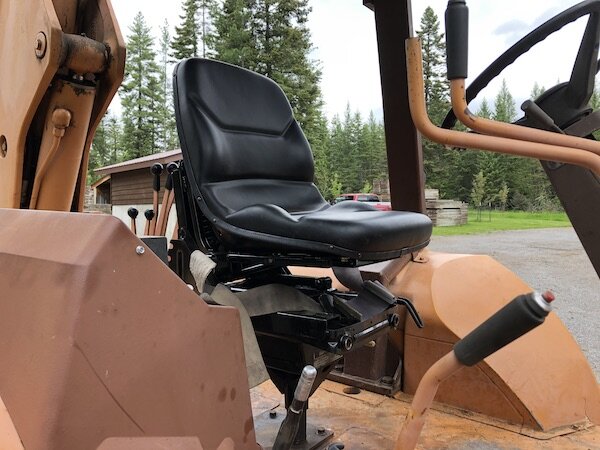They became acquainted with the electric fence and have since been busy plowing up every square inch of pasture. Pigs will be pigs.
He also fenced off part of the chicken yard so the peeps could go out. They have a separate door from their part of the coop out into their fenced area of the yard. Watching them venture out is entertaining and I’m rather sorry I missed it this year. One or two brave ones will stand in the doorway looking out until eventually one of them gets pushed out. (There is a drop of about a foot out the door.) Others follow, and then they all have to figure out how to use the ramp to get back in.
I am a bit concerned about my rooster. Elysian brought the black rooster back last week and the husband says the two roosters were fighting while I was gone. Now the Buff rooster is limping. He let me pick him up yesterday but he wasn’t terribly excited about me looking at his leg. Hopefully it will get better. I don’t have a good place to separate him from the rest of the flock, and he insists on being out in the yard with the hens anyway.
While all the animals were venturing out, so was I. I went on a road trip. This close to the summer solstice, I have the advantage of about 16 hours of daylight, so my plan was to leave early Thursday morning, stop in Spokane for a few hours, then meander over to Seattle and roll in around 6-7 p.m. I gain an hour going west, too.
[Thank you to those of you who messaged me to see if I was okay. I don’t like to announce ahead of time that I will not be home, for obvious security reasons. If I don’t blog for a few days—especially over a weekend—then it’s a good bet I am off visiting the girls. If I don’t blog for more than a week, then it might be time for concern.]
Before I left, I made a list of all the places I needed to visit in Spokane and checked their operating hours. I was glad I did that, because otherwise, I might have been running in circles. Some places open at 9, some at 10, and some not until 11. I got to Spokane around 9 a.m. My first stop was the quilting store where I get Signature 40wt thread; I picked up another couple of spools and visited with the owner about what to expect in Seattle as she had just come back from there.
Hobby Lobby was open, too, so I stopped there. By then, it was 10 a.m. and I headed to the other quilt store to drop off my Janome for its annual servicing. I had checked with the store ahead of time to make sure that they could accommodate my machine if I dropped it off Thursday and picked it up on Monday.
One of my favorite stores in Spokane, Sew E-Z Too, is closing. The owner is 74 and lives about an hour out of Spokane and drives in six days a week. Apparently she wants to retire. Who can blame her? I stopped in to see what they had, but the line at the cutting table was 20 deep and I didn’t want to wait.
The last place I stopped before leaving Spokane was to deliver the quilt top I made on commission in January for my friend Jan, who also serves on our denominational board. Her husband is our district pastor. I was happy to see them and even happier to hand off that project.
I was back on the road to Seattle around 1 p.m. There isn’t much between Spokane and Seattle except potato fields and the small cities of Moses Lake and Ellensburg. Moses Lake has a Joann Fabrics that happens to be right next to a gas station, so I took the opportunity to stop in, fuel up the car, and wander around Joanns for half an hour. Without exception, all the Joann stores I visited on this trip were almost completely sold out of quilting cotton, no doubt a result of all the mask-making combined with a disruption in the supply chains. I didn’t find much on the remnant racks, either.
I also stopped in Thorp, just past Ellensburg and before Snoqualmie Pass, at a huge fruit stand/antique store. I like to wander around the antique store and see what goodies I can find. I saw a few quilts and aprons, but nothing that needed to come home with me.
By 6:00 p.m., I was on I-90 heading into downtown Seattle to pick up I-5 north. DD#1 lives a few miles north of downtown near the University of Washington, and DD#2 is about five miles north of her. I noted to the husband that this was the first time I’ve ever driven into Seattle and not had to sit in traffic. And it was rush hour! Apparently, most people are still working from home.
The AirBnB where I stayed in February, which was just a few blocks from DD#2’s house, wasn’t available on this trip. I found another one in the same neighborhood, a small suite in the basement of a home. The owners were a lovely couple about my age and the accommodations were great. This location also had off-street parking, which is a plus. I will probably stay there again. I made myself some dinner, called the husband to check in, let the girls know I was in town, and turned in for the evening.
In tomorrow’s post, I’ll talk about the differences I saw between pandemic life in Montana and Seattle, and also show you some of the goodies I picked up.






